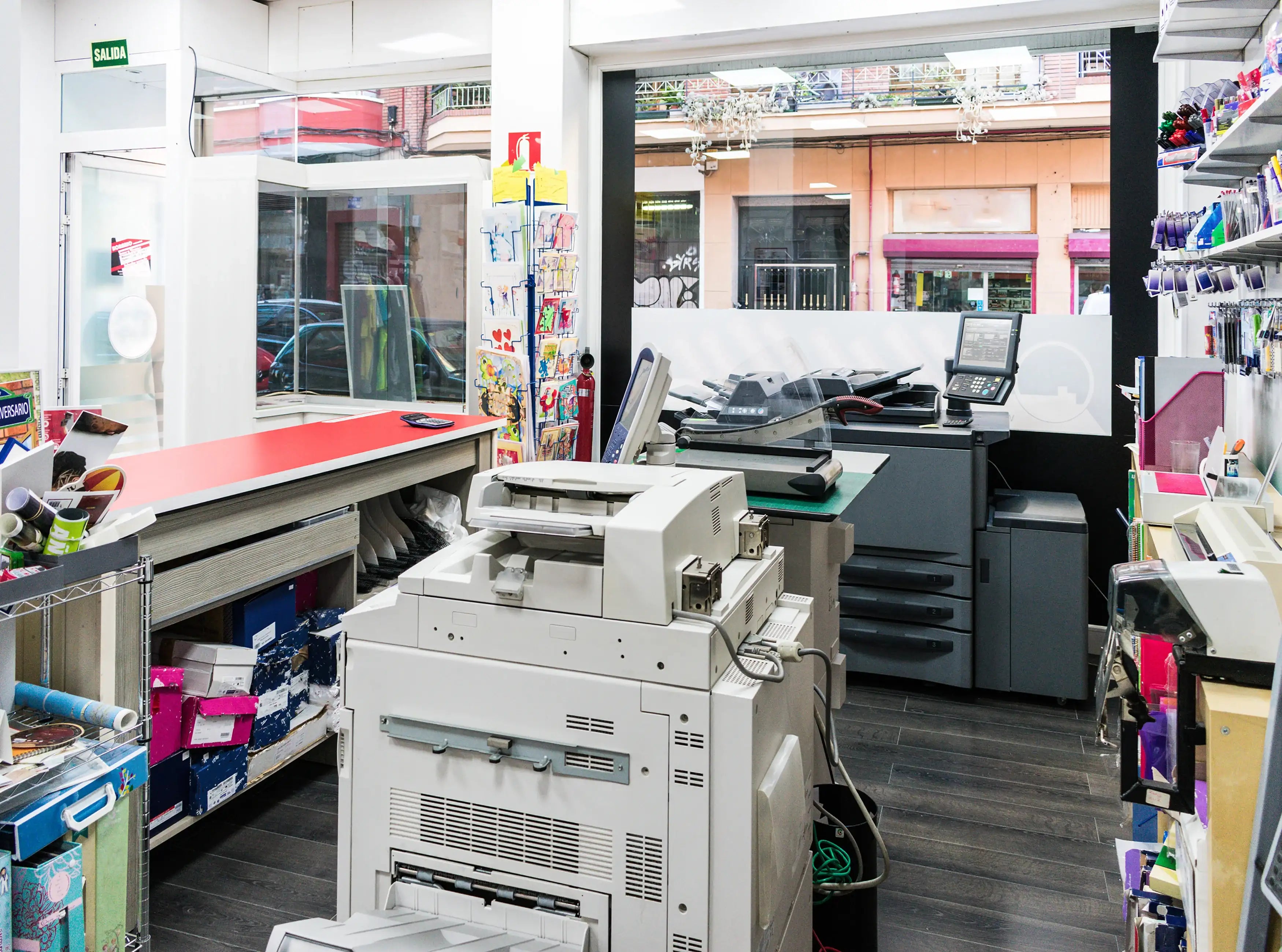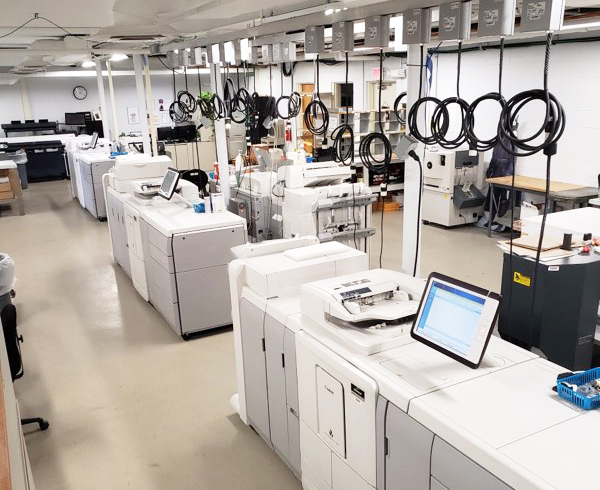Exploring Printing Materials: What a Print Shop Near Me Can Offer
Exploring Printing Materials: What a Print Shop Near Me Can Offer
Blog Article
The Ultimate Overview to Using Printing Services for Personalized Art Prints
Steering through the globe of custom art prints calls for a clear understanding of different printing solutions. Artists have to consider elements such as printing strategies and materials to accomplish the wanted outcome. Each decision, from artwork preparation to shade calibration, plays an essential role in the final item. As they explore these aspects, artists can reveal the capacity for their work to get in touch with target markets in a meaningful method. What steps can they require to guarantee their prints stand apart?
Recognizing Different Kinds of Printing Solutions
Numerous people might ignore the intricacies of printing services, recognizing the different types available is essential for anyone looking to produce custom-made art prints. One of the most typical kinds include electronic printing, offset printing, and screen printing. Digital printing is favored for its quick turnaround and capacity to generate high-grade pictures directly from digital documents, making it ideal for small runs. In comparison, countered printing offers premium photo quality and is cost-efficient for bigger amounts, using plates to transfer ink onto paper. Screen printing, commonly used for fabrics and promotional things, includes pushing ink through a mesh display, permitting vibrant colors and textures. Each method has its distinct advantages and constraints, making it important for artists and designers to examine their specific demands, such as quantity, desired high quality, and spending plan, before picking a printing service that straightens with their creative vision.
Selecting the Right Products for Your Prints
Choosing the ideal products is crucial for accomplishing premium custom art prints. Comprehending the various kinds of paper and the value of ink high quality can considerably impact the outcome. Musicians have to take into consideration these elements to assure their vision is accurately stood for in the printed item.
Paper Kind Explained
Choosing the ideal paper type is important for attaining the desired aesthetic and sturdiness in personalized art prints. Various choices exist, each offering distinct features. As an example, glossy paper boosts color vibrancy and detail, making it excellent for photography prints. On the other hand, matte paper supplies a softer coating, which is more suitable for artwork that needs nuance and structure. Fine art paper, frequently made from cotton or alpha cellulose, provides historical top quality and is appropriate for reproducing elaborate details in paintings (Print Shop Near Me). Furthermore, specialty papers, such as watercolor or canvas, can include unique aesthetic results. Ultimately, selecting the appropriate paper type will substantially affect the final discussion, guaranteeing that the artwork is both durable and aesthetically appealing
Ink Top Quality Issues
Ink high quality plays an important role in the overall success of customized art prints. Premium inks assure dynamic shades, sharp information, and long life, which are crucial for showcasing creative job. When selecting printing solutions, artists need to consider pigment-based inks over dye-based options, as they provide much better discolor resistance and shade security. In addition, the option of ink must match the chosen paper kind, boosting the print's visual impact. Ecological factors, such as humidity and temperature, can additionally impact ink efficiency; consequently, musicians need to make inquiries concerning ink formulas that withstand these components. Ultimately, purchasing premium ink quality can elevate the final item, guaranteeing that the art print holds to the artist's vision for many years to come.
Checking Out Printing Strategies: Digital vs. Standard
While both typical and digital printing strategies have their one-of-a-kind advantages, the decision on which method to use often rests on the particular demands of the art work. Digital printing succeeds in flexibility and rate, allowing for fast turn-around times and the capacity to print on need. This method is particularly useful for musicians who call for little runs or special pieces, as it removes the demand for substantial configuration processes.Conversely, conventional printing strategies, such as lithography and screen printing, commonly generate richer textures and colors, interesting musicians looking for a more authentic and tactile surface. These approaches can boost the depth and high quality of the artwork, making them suitable for bigger editions. Additionally, conventional methods may provide an unique visual that electronic printing in some cases battles to reproduce. Inevitably, the selection in between these methods must think about elements like preferred quality, quantity, and imaginative intent, directing artists to the most appropriate option for their tasks.

Preparing Your Artwork for Printing
Effectively preparing artwork for printing calls for mindful focus to information, no matter the picked printing method. Artists should guarantee that their files are created at the ideal resolution, typically 300 DPI, to keep sharpness and clearness. The right shade setting, generally CMYK for print, is important to achieve the wanted shade precision. Artists must also consider the dimensions of the art work, seeing to it to include bleed locations if required, to stop any type of unwanted white sides after trimming.Additionally, file layouts play a vital role; TIFF and PDF are typically liked for premium prints. Before entry, it's important to assess the artwork for any kind of flaws or undesirable elements. By diligently inspecting these facets, artists can boost the chance of their prints lining up with their imaginative vision, ultimately causing a successful printing end result.
The Significance of Color Calibration and Proofing
Color calibration and proofing are vital steps in the printing procedure, as they assure that the final result precisely reflects the artist's vision. Correct color calibration warranties that the colors presented on the screen suit those that will be printed. This procedure includes adjusting the display settings, printer accounts, and inks to achieve a consistent color representation.Additionally, proofing permits artists to sneak peek their work before the last print run. This stage allows them to identify and fix any type of disparities in detail, color, or saturation, therefore reducing expensive errors. By utilizing hard-copy or digital evidence, musicians can make informed decisions regarding modifications required for excellent results.Incorporating shade calibration and proofing right into the printing operations not just boosts the high quality of the end product yet likewise fosters a trusted collaboration in between the artist and the printing solution, guaranteeing fulfillment and integrity to the original artwork.
Choosing the Perfect Dimension and Style for Your Prints

Advertising and Marketing Your Custom-made Art Prints
Advertising and marketing customized art prints calls for a solid brand identification to stand apart in an open market. Effective on-line promo methods and the calculated use of social media systems can greatly boost presence and interaction. By integrating these aspects, musicians can produce a compelling visibility that draws in possible purchasers.
Building Your Brand Name Identity
Developing a strong brand identity is important for artists aiming to efficiently market and sell their custom-made art prints. This identification includes the artist's special design, values, and story, which reverberate with potential buyers. Musicians must produce a cohesive visual visibility throughout all platforms, consisting of logo designs, color pattern, and typography that reflect their creative vision. Furthermore, a clear mission statement aids communicate the artist's function and enthusiasm. Engaging narration concerning the inspiration behind each item can cultivate psychological connections with the audience. Uniformity in messaging, whether on social media sites or packaging, enhances recognition and trust. By very carefully curating their brand name identity, musicians can distinguish themselves in an open market, drawing in devoted clients who appreciate their creativity.
Effective Online Promo Strategies
What strategies can artists utilize to effectively advertise their personalized art prints online? First, creating a specialist website showcasing the artwork is necessary. This website needs to consist of comprehensive descriptions and high-grade images to engage potential buyers. In addition, musicians can make use of email advertising by developing a client list to share updates, promos, and brand-new launches. Collaborating with blog writers and influencers in the art community can expand reach and reliability. Using limited-time discounts or special pieces can likewise create seriousness, encouraging acquisitions. Additionally, maximizing content for search engines with appropriate keyword phrases will improve visibility. Ultimately, keeping a blog about the artistic process can bring in art lovers, fostering a much deeper link with the target market and enhancing the overall marketing approach.
Using Social Media Operatings Systems
Social media site systems act as effective tools for musicians looking to market and sell their personalized art prints. By leveraging platforms like Instagram, Facebook, and Pinterest, artists can display their work to a huge audience. Involving visuals and tactical hashtags can raise presence, drawing potential buyers to their profiles. Routinely publishing content, such as new layouts or behind-the-scenes procedures, aids keep audience interest and promotes a feeling of area. Furthermore, artists can make use of visit this site right here targeted advertising and marketing to reach details demographics, enhancing the chances of sales. Collaborations with influencers or various other artists can even more enhance exposure. Inevitably, a well-curated social media sites visibility not only promotes custom-made art prints but additionally constructs a devoted consumer base gradually.
Often Asked Inquiries

How Do I Find Trustworthy Printing Service Providers?
To locate reputable printing company, one ought to investigate on the internet evaluations, look for referrals from peers, contrast portfolios, request examples, and analyze consumer solution responsiveness. This complete method guarantees informed decisions and acceptable outcomes.
What Is the Common Turn-around Time for Customized Prints?
The common turn-around time for customized prints differs by company, however typically ranges from a few days to two weeks. Variables affecting this include order size, intricacy, and the certain printing methods used.
Can I Obtain a Refund if I'm Not Pleased With My Prints?
The inquiry of obtaining a reimbursement for unsatisfactory prints commonly depends upon the particular printing service's policies. Many companies offer satisfaction warranties, while others may have rigorous return conditions, emphasizing the significance of reviewing terms ahead of time.
Are There Any Hidden Prices Linked With Printing Services?
Several printing solutions may include surprise expenses such as configuration fees, shipping fees, or additional costs for certain materials. It's necessary for customers to ask about all possible expenditures prior to completing their order.
Exactly How Can I Guarantee My Prints Are Eco-friendly?
To assure prints are eco-friendly, one should choose eco-friendly inks, recycled paper, and sustainable printing practices. Researching printing solutions that prioritize sustainability and obtaining accreditations can better ensure marginal ecological helpful resources effect in the printing process. Steering through the globe of custom-made art prints requires a clear understanding of numerous printing services. Several people may forget the complexities of printing services, recognizing the different types available is important for anybody looking to create custom-made art prints. The most typical kinds consist of digital printing, offset printing, and screen printing. Efficiently preparing artwork for printing needs mindful focus to information, regardless of the picked printing method. Prints intended at galleries may call for common dimensions to help with framework, whereas one-of-a-kind formats may appeal to collectors looking for something distinctive.Lastly, the printing service's capabilities must be assessed.
Report this page